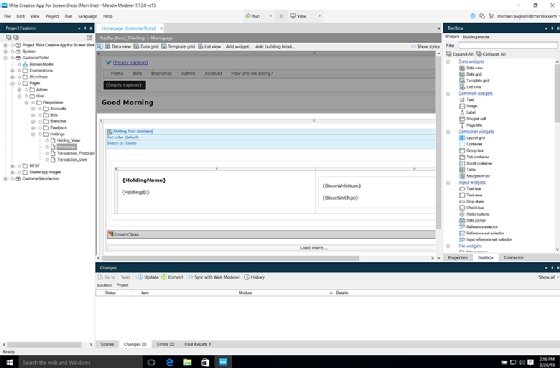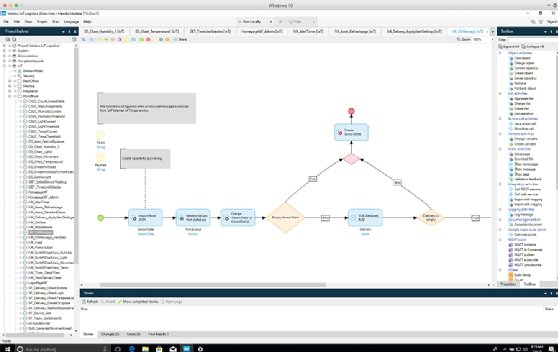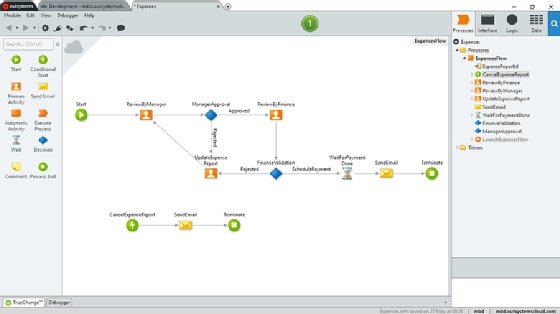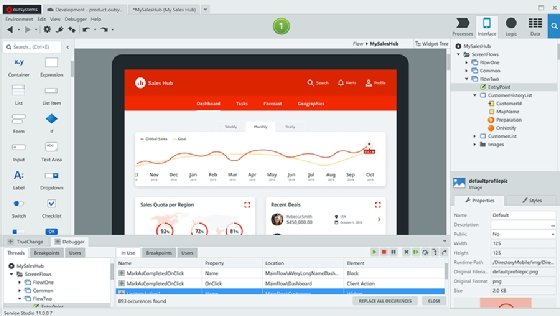
Low-code platforms face off: Mendix vs. OutSystems
Low-code products target different audiences. So, will traditional or citizen developers use low-code platforms more in the future? We pit Mendix vs. OutSystems to explore each approach.
Low-code development assists professional developers, and empowers line-of-business workers, to create web and mobile apps. How an organization balances professional and citizen development will decide this duel between two similar platforms: Mendix and OutSystems. Low code is a perceived answer to the shortage of professional developers and a growing need for rapid technological response to business problems. While enterprises theoretically can apply low-code tools to any development mission, web and mobile app development present business opportunities and competitive challenges befitting this type of platform.
Web and mobile applications are the face of every enterprise -- to customers, business partners and prospects. Traditional program development struggles to keep pace amid business and market changes, the evolving nature of the online experience and user expectations, not to mention the regular introduction of mobile devices and even browsers every few months.
OutSystems and Mendix present similar low-code platforms for organizations to create web and mobile apps. The two companies have similar user and analyst ratings, as well as comparable features and strategies for their products. So, in this battle of Mendix vs. OutSystems, enterprises must determine which option best helps them deliver a complete experience to users.
Low-code application development seems the perfect fit for this mission, but it's not enough to only cater low-code features to devices and the UI. Developers want a platform that lets them define the user experience, as well as assemble database and application connectors to complete the workflow. Mendix and OutSystems both focus on the UX, and neither product is intended to develop the full range of enterprise applications.
Mendix, founded in 2005, claims over 4,000 customers. OutSystems, founded in 2001, claims over 1,200 customers. Both low-code development platforms have similar features, such as a multitabbed dashboard for users to organize work. To determine a winner, let's explore their product details and the way each company aligns itself with business missions.
Low-code platform strategies: Appeal to pros and citizen devs
Mendix's imagine-it-and-do-it theme aligns to the mobile and web app-dev mission. The platform includes low-code and no-code capabilities to support both business professionals -- also referred to as citizen developers -- and professional developers, and its cloud-native product. The product gets good scores among both categories of developers.
OutSystems' innovation-and-collaboration approach stresses low- and no-code to unite business specialists and IT, which resonates with both groups. The company also emphasizes full-spectrum app development rather than a solitary focus on the UI and device.
Both Mendix and OutSystems exploit the cloud, but Mendix has a more cloud-centric approach to installation and use of the package. Users deploy applications to each vendor's respective cloud PaaS -- both run on AWS -- with options to deploy on other clouds.

UI and app creation: Visual approach or more knobs
Users seem to prefer Mendix's highly visual web app UI modeling system, which they said has an easier learning curve than OutSystems' approach. Professional developers tend to prefer OutSystems' highly tuned experience, which is based on user skill levels and even job classification, which they believe provides more control over the development framework.
The better choice when comparing Mendix and OutSystems UIs depends on whether the primary enterprise users will be professional or citizen developers -- so we'll call this one a draw.
Another toss-up in this Mendix vs. OutSystems showdown is the actual application creation process. Mendix's highly visual approach provides a set of prebuilt applications and templates that focus app developers on the UX. OutSystems starts users with a choice of whether they build a web, mobile or unified application; some users criticize this approach, but most are generally happy with it. Just as with the overall UI, citizen developers tend to prefer the highly visual Mendix approach, while professional developers opt for OutSystems.

Integration with internal systems
IT integration is a critical differentiator in UI-centric low-code platforms because many products don't provide tools to link up a new mobile or web front end with core IT applications and databases. And guess what? We're deadlocked in this category, also due to the difference in perspective between citizen developers and professional developers.
Citizen developers prefer Mendix because it gives them that easy visual experience, while they find OutSystems more complicated. Developers believe OutSystems offers better control over IT application integration, better project management and a better way to collaborate with citizen devs in situations where the two development groups work together than Mendix does.
Community support and resources
Community resources are a big factor for prospective low-code users. Many prefer products that offer prebuilt applications and help users tailor generalized apps for specific enterprise missions. Mendix and OutSystems both have community support and an application store, as well as user forums. Here, citizen and professional developers seemed to rate the companies the same.
Pricing for smaller or larger orgs
Across the base of users overall, the cloud and pricing comparison is basically a draw. Both products offer a free tier of use, but OutSystems has a larger free tier that supports up to 100 users, which attracts small organizations. These users generally lack professional development resources, however, and probably would benefit more from Mendix's approach.
Beyond free options, Mendix offers three tiers of pricing plans, from a single app up to an enterprise scale. OutSystems offers two pricing tiers -- the more expensive one with unlimited end-user capacity. In terms of sheer cost, for enterprise users, OutSystems pricing ramps up faster and higher.

Tiebreaker: Citizen devs or pros?
UX presents no winner in this Mendix vs. OutSystems comparison, so let's turn to two broader goals to clearly differentiate these low-code development platforms. First, what exactly is an enterprise's goal with low-code development? Second, how could differences in a low-code platform's architecture impact the evolution of applications once the tool's adopters gain experience and expand their original project goals? Here, finally, we can identify a winner.
Mendix's visual orientation derives from its basic platform, which uniformly works from the simple UI to the complexities of deployment. This is exactly what citizen developers want -- in every category of functionality where citizen and professional developers diverge, the former cleave toward Mendix. The basic presumption Mendix makes is that, over time, companies will increasingly rely on citizen developers and low-code applications. For that reason, Mendix positions its low-code tool toward the citizen developer. When a cross-functional team of citizen and professional developers selects low-code platforms, those teams led by the citizen side almost always gravitate to Mendix.
OutSystems is also visual, but its overall low-code approach subtly links to the normal progression of a project run by an IT organization. Citizen developers, once they dig in, use the platform without major problems, but they view that effort as a barrier to early low-code productivity. Citizen developers within product selection teams often chafe at OutSystems' descriptions of its features. Professional developers, on the other hand, welcome a familiar project approach, terminology, and presentation of project and integration issues.

Which low-code platform should you select?
To pick a winner in Mendix vs. OutSystems, consider a basic truth: The need for applications and app development vastly outpaces the pool of professional developers available to your organization. Many large enterprises have more citizen developers and business-driven projects than professional developers and traditional IT projects. Ultimately, this puts low-code platforms in the domain of citizen developers.
The citizen developer perspective of low code swings nearly all the comparative categories to the advantage of Mendix. Partnerships between citizen developers and IT might be easier to sustain with OutSystems, but that advantage is outweighed by the Mendix approach, which is likelier to produce quick, successful outcomes for most low-code missions. This is especially true as citizen development takes on more prominence and even less IT-skilled workers interact with these platforms.
If your organization relies more on professional app development than citizen development, OutSystems offers a solid platform from which to launch projects. Yet, accept that this low-code platform's development bias will hamper the uptake by business staff who lack experience as programmers. If you are committed to citizen development, Mendix affirms that approach, but you will likely want to apply its architecture of integration, deployment and lifecycle management to collateral IT projects with your core applications and databases to help control projects and avoid compromised security and compliance.
When in doubt, look to the future. If a wider embrace of citizen development is in the cards, then Mendix is the winner of our face-off.







